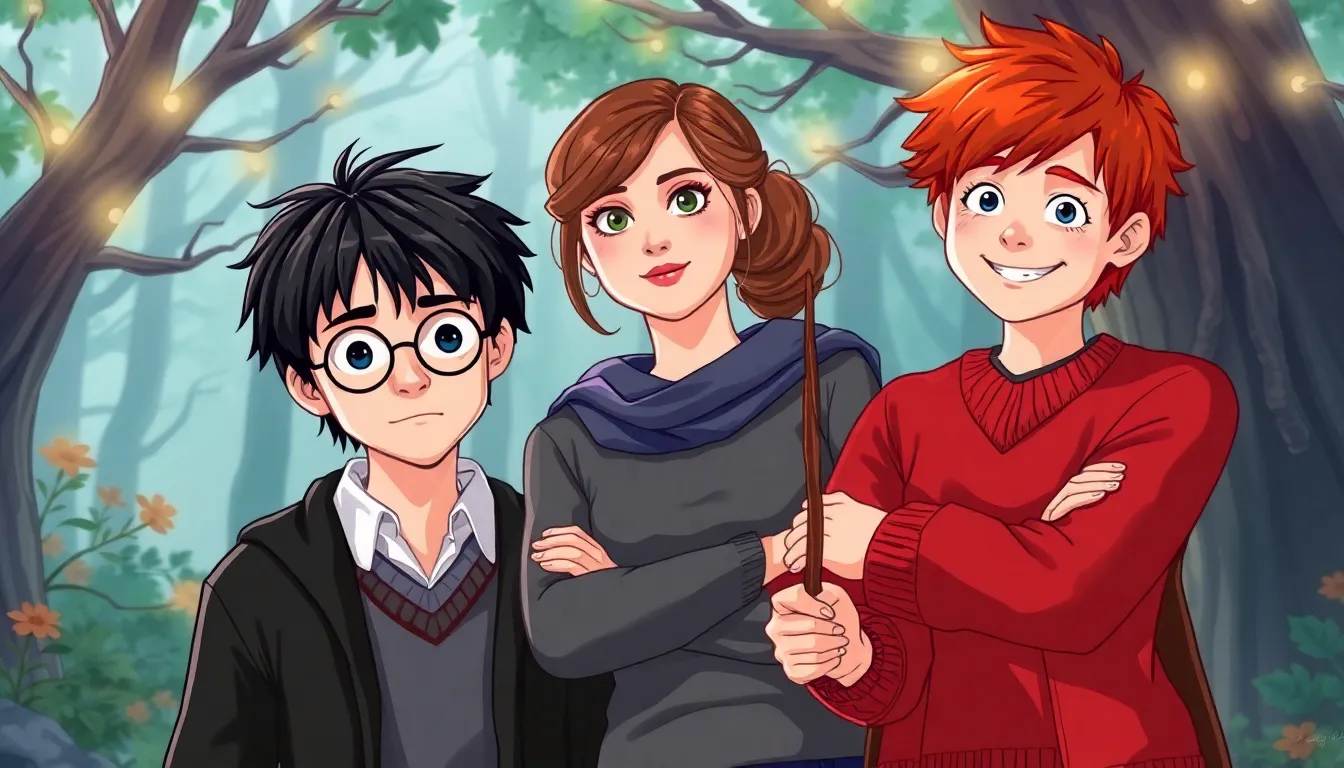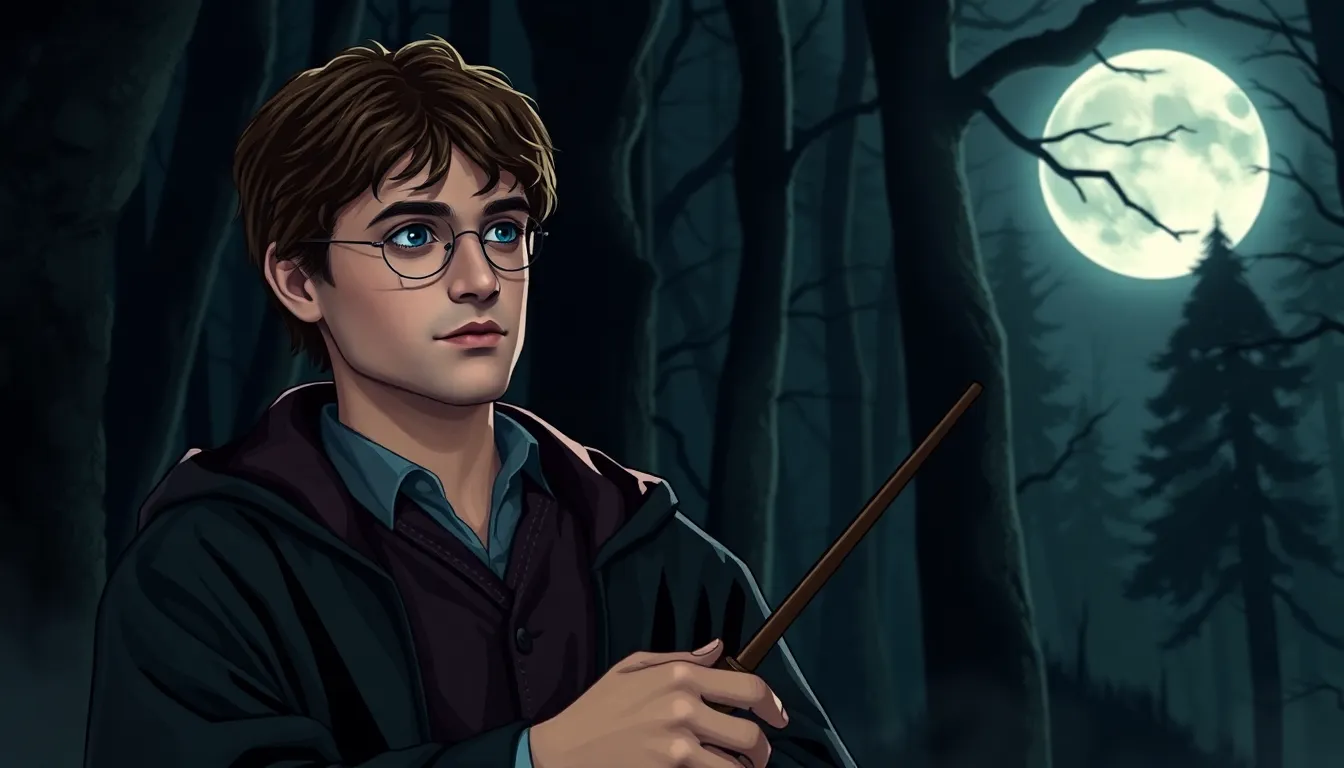Table of Contents
ToggleIn the magical realm of Hogwarts, few films have captured hearts quite like Harry Potter and the Prisoner of Azkaban. This third installment not only introduces new characters but also transforms the beloved series with its darker tones and whimsical flair. With a cast that’s as enchanting as a Patronus, it’s no wonder fans still debate who stole the show.
Overview of Harry Potter Prisoner of Azkaban
“Harry Potter and the Prisoner of Azkaban” represents a pivotal shift in the Harry Potter film series. This third installment, directed by Alfonso Cuarón, introduces significant character developments and deeper narrative elements. Both the tone and themes darken, reflecting the complexities of adolescence and moral dilemmas.
The film showcases new characters, such as Sirius Black, played by Gary Oldman, and Remus Lupin, portrayed by David Thewlis. These roles add depth and intrigue, elevating the storyline. Audiences engage with their backstories and motivations, which enhance the overall plot.
Daniel Radcliffe, Emma Watson, and Rupert Grint return as Harry, Hermione, and Ron. Each actor delivers memorable performances, further solidifying their characters’ growth. Their chemistry remains a focal point, contributing to the film’s enduring popularity.
Visual elements play a crucial role in this film. Cuarón’s direction brings a unique aesthetic, using darker color palettes and innovative camera work. Magical scenes, such as the Time-Turner sequence, captivate viewers with stunning visuals that enhance storytelling.
Additionally, the soundtrack, composed by John Williams, provides an emotive backdrop that complements the film’s tone. This score captures the ups and downs of the narrative, enriching the viewer’s experience.
Critics often highlight the character arcs in “The Prisoner of Azkaban.” These arcs demonstrate themes of friendship, loyalty, and the confrontation of one’s past, resonating with audiences. As a result, this film stands out in the series, reflecting a transition into more sophisticated storytelling.
Main Cast Members

The success of “Harry Potter and the Prisoner of Azkaban” heavily relies on its talented cast. Their performances brought the beloved characters to life and contributed to the film’s overall immersive experience.
Daniel Radcliffe as Harry Potter
Daniel Radcliffe embodies Harry Potter with authenticity. His portrayal showcases Harry’s transition from childhood to adolescence, highlighting moments of vulnerability and strength. Memorable scenes capture Harry’s battle with inner demons, especially regarding his past and connection to Sirius Black. Radcliffe’s chemistry with fellow cast members enhances the narrative, allowing viewers to connect with Harry’s journey on a deeper level. As the central character, Radcliffe balances bravery and innocence, making his performance a crucial element of the film’s emotional depth.
Emma Watson as Hermione Granger
Emma Watson brings Hermione Granger to life with intelligence and determination. She portrays Hermione’s growth as she grapples with friendships, loyalty, and the complexities of adolescence. Notable moments showcase Hermione’s resourcefulness, especially during conflicts with Dementors and her brave stand against injustice. Watson’s expressions and delivery reflect Hermione’s unwavering commitment to her friends. Her performance further emphasizes the themes of friendship and support, solidifying Hermione’s role as an essential character in the trio’s adventures.
Rupert Grint as Ron Weasley
Rupert Grint perfectly captures Ron Weasley’s loyalty and humor. His portrayal adds a crucial dynamic to the trio, showcasing Ron’s struggles with self-doubt and the pressures of living in Harry’s shadow. Grint’s comedic timing brings levity to tense moments, creating a balance that enhances the film’s tone. Highlights include Ron’s fierce loyalty during encounters with danger, particularly when facing the threat of Dementors alongside Harry and Hermione. Grint’s performance highlights Ron’s emotional depth, establishing him as a character of great significance in the story.
Supporting Characters
Supporting characters enrich “Harry Potter and the Prisoner of Azkaban,” adding complexity to the narrative.
Gary Oldman as Sirius Black
Gary Oldman portrays Sirius Black, Harry’s godfather, with depth and nuance. His character’s mysterious nature captivates audiences and reveals layers of loyalty and bravery. Throughout the film, Sirius embodies the struggle between innocence and guilt, showing how past choices shape one’s identity. Oldman’s performance emphasizes Sirius’s protective instincts, especially towards Harry. The emotional bond they share drives significant plot points, enhancing the film’s themes of friendship and rediscovery. Audiences appreciate Oldman’s ability to capture both warmth and peril, leading to unforgettable moments.
David Thewlis as Remus Lupin
David Thewlis takes on the role of Remus Lupin, the kind-hearted Defense Against the Dark Arts teacher. His character symbolizes understanding and compassion, providing essential guidance to Harry. Throughout their interactions, Lupin reveals personal struggles with his werewolf condition, adding depth to his character. Thewlis masterfully conveys both strength and vulnerability, fostering a sense of empathy among viewers. His mentorship shapes Harry’s understanding of complex moral dilemmas. The dynamic between Lupin and Harry highlights themes of mentorship, loss, and acceptance throughout the film.
Maggie Smith as Minerva McGonagall
Maggie Smith brings Minerva McGonagall to life with authority and warmth. As a respected professor and Head of Gryffindor House, she reinforces the values of loyalty and integrity. Her character serves as a guiding force for students, often displaying tough love. Smith’s portrayal balances firmness with care, especially in her interactions with Harry and his friends. Significant moments showcase McGonagall’s fierce protection of her students during critical challenges. The layered performance underscores her role as a mentor who advocates for justice and fairness within the wizarding world.
Character Development in the Film
Character development in “Harry Potter and the Prisoner of Azkaban” showcases significant evolution, particularly for the main trio. Harry Potter’s journey emphasizes his transition into adolescence, which includes grappling with identity and unresolved feelings about his past. Hermione Granger’s arc highlights her growing confidence and determination, especially as she navigates complex challenges. Ron Weasley also experiences personal growth, addressing self-doubt while reinforcing his loyalty to friends. Each character’s depth adds emotional resonance to the film’s narrative.
Growth of Main Characters
Daniel Radcliffe brings Harry’s internal struggles to life as he learns about his heritage and connections. Emma Watson demonstrates Hermione’s incredible resourcefulness, showcasing intelligence that becomes essential during perilous situations. As Rupert Grint highlights Ron’s humor and steadfastness, he contributes to the group’s dynamic, balancing vulnerability with bravery. Together, these performances illustrate how friendships evolve under pressure and emphasize a deeper understanding of loyalty.
Introduction of New Characters
New characters in the film significantly influence the development of existing ones. Gary Oldman’s portrayal of Sirius Black adds complexity, introducing themes of loyalty and the consequences of past choices. As Harry’s godfather, Sirius offers a glimpse into the potential for redemption and familial connections. David Thewlis, in the role of Remus Lupin, embodies understanding and compassion, guiding Harry while revealing personal vulnerabilities. Both characters enrich the narrative, deepening exploration of friendship and identity.
“Harry Potter and the Prisoner of Azkaban” stands as a pivotal moment in the series, showcasing remarkable character growth and deeper themes. The performances of the main cast, alongside the impactful portrayals of supporting characters, create a rich tapestry that resonates with audiences.
The film’s unique visual style and emotive score further enhance its storytelling, making it a memorable experience. As fans continue to discuss the standout performances and character arcs, the film’s legacy remains strong. Its exploration of friendship, loyalty, and the complexities of identity ensures that it holds a special place in the hearts of viewers, solidifying its status as a beloved installment in the Harry Potter saga.








